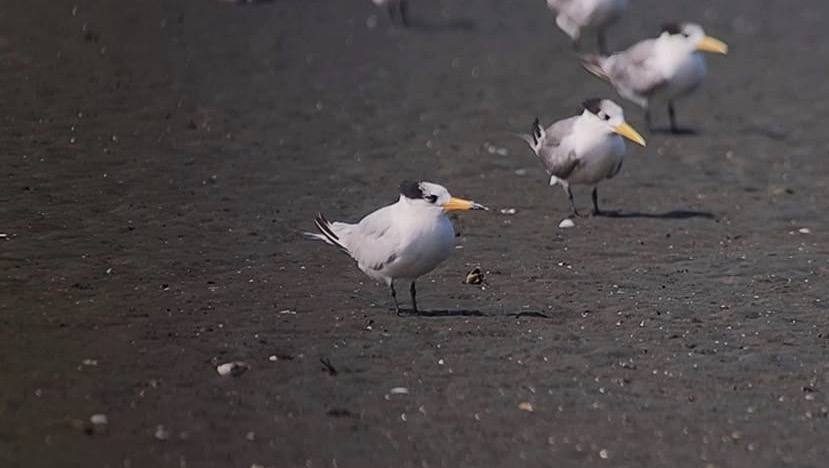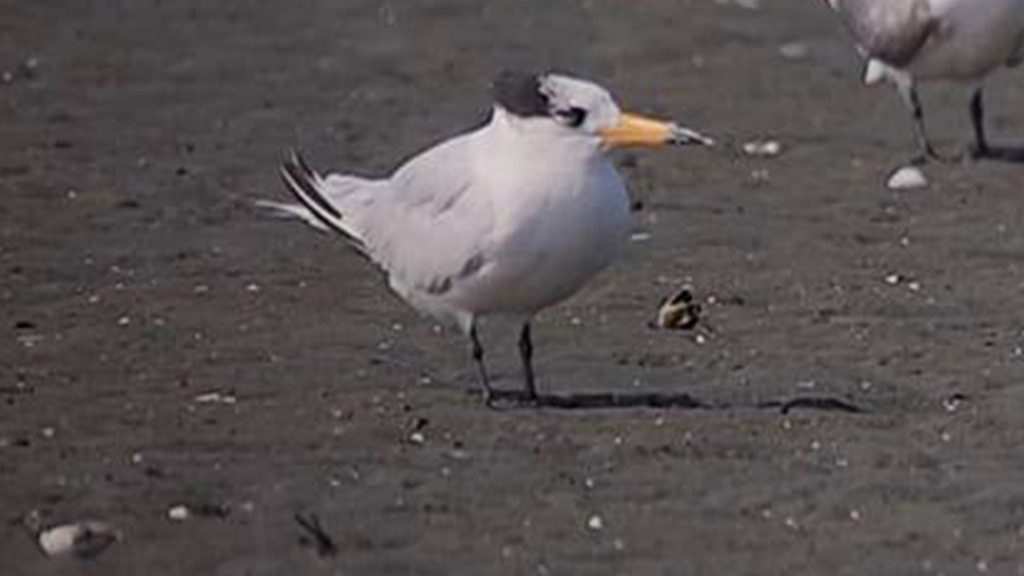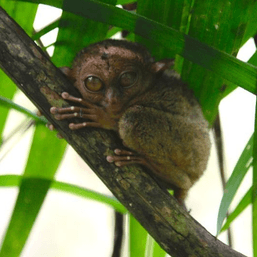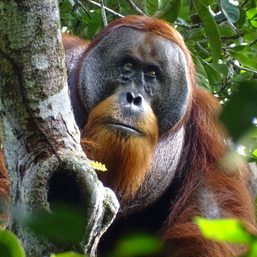SUMMARY
This is AI generated summarization, which may have errors. For context, always refer to the full article.

MANILA, Philippines – It was a dry and windy day in Manila Bay. The sun was out. Local bird watcher Irene Dy was walking along the sandbar that straddles the boundary between Sta. Cruz, Paombong, and Pamarawan Island in Bulacan.
Dy was doing a survey in December 2023 to count birds and check the bands and flags on their legs. An entire flock flew up, and one with a different bill shape and color – and most importantly, with a black tip – caught her eye.
There it was. One of the rarest birds in the world: the Chinese crested tern.
“It was a heart pounding moment, as I instantly knew what it was,” Dy said.
She’s waited three years for this moment. “I followed it with my binoculars until it landed and immediately started to photograph it.”
Dy, who had been birdwatching for more than a decade, said she felt “extremely lucky” to spot the bird in Manila Bay.
The bird’s first recorded sighting in the Philippines was in 1886. Then it was in 1905 that the Chinese crested tern was spotted in Manila Bay. In 2018, it came back, this time in Panabo, Davao.
In the following weeks after the Manila Bay sighting, Dy said other fellow birdwatchers visited the area in hopes of seeing the rare bird.
The Chinese crested tern (Thalasseus bernsteini) can easily be confused with the more common Greater crested tern (Thalasseus bergii). It can be distinguished from the latter by its two-toned yellow bill and the black tip.
Ornithologists attribute its decline to illegal poaching.

From the bay and beyond
With only around a hundred left in the wild, the Chinese crested tern is categorized as “critically endangered” by the International Union for Conservation of Nature (IUCN).
It was long thought to breed only in China, until the species was found breeding in South Korea, too.
That it’s seen in Manila Bay, outside its breeding grounds, can mean the environment in the Bay area is healthy enough to provide support for migrating and endangered birds.
“The appearance of Chinese crested tern [in] Manila Bay is a good thing,” conservation biologist Simba Chan told Rappler in a message. Chan has closely studied the species and monitored the tern breeding colony in China.
According to Chan, there’s not enough knowledge on the migratory route of the species. In general, they follow the migration of the Greater crested terns bred in Southeast China to Southeast Asia and the Philippines.
“This proves the Bay is an important migratory site to seabirds and shorebirds from northern Asia,” added Chan.

Its presence in the area can also point to a possible overwintering site in Luzon, Danish ornithologist Arne Jensen told Rappler. Jensen is one of the founders of the Wild Bird Club of the Philippines. An overwintering site is where migratory birds stay to wait out the winter season.
“The Bulacan bird was expected given that it is documented that there is an overwintering site in Davao,” said Jensen.
“However, the time of the Bulacan bird came as a surprise because it was in the middle of its overwintering period where it shouldn’t be migrating. This can suggest that there may be another overwintering site in Luzon.”
The Philippines lies in the East Asian Australasian Flyway, the most populated flyway in the world. The country is a crucial rest stop and refueling station for birds who fly at night and rest in the morning, moving to warmer places to spend winter.
Birdwatchers in the Philippines find the winter months of December to February a good time to go birding. There’s always a chance to see a rare migrating bird, in the chilly weather of the amihan season.
Jensen noted that recent observations of the bird species suggest a tiny overwintering population in Panabo and a migration roost site in Donsol, Sorsogon, and Pangasinan.
Protection needed
It’s been a hundred years since the first recorded sighting of the Chinese crested tern in Manila Bay. It was a different Manila back in 1905, the same year American urban planner Daniel Burnham made the City Beautiful masterplan.
The sandbar where Dy spotted the rare bird is northwest of the New Manila International Airport, touted as the single-largest investment project in the country.

At present, Manila Bay hosts many reclamation projects that seek to develop the crowded capital outward to the sea.
The Department of Environment and Natural Resources is conducting an assessment of all the projects and their impacts on the ecosystem, as these projects were green-lighted and evaluated separately.
Researchers have warned against human activities that disrupt the area as an important pit stop for many migratory birds. (READ: Save migrating birds over northern Manila Bay, says study)
Aside from the Chinese crested tern, birdwatchers have spotted the endangered Nordmann’s greenshank (Tringa guttifer) in the same area – around 13, according to Jensen.
The ornithologist said there should be more collaboration among groups, scientists, and political institutions to protect critical habitats.
“It should be the conservation NGOs and academe that know their birds that should produce informative press releases, informing the public and politicians and [advocating] that existing critical habitat policies are being implemented.” – Rappler.com
Add a comment
How does this make you feel?















There are no comments yet. Add your comment to start the conversation.